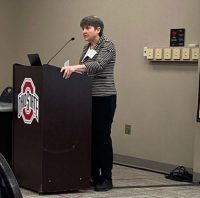Confidence in food safety has hit an all-time low in the U.S., according to a recent Gallup poll[i]. Food recalls have dominated the news recently, ranging from harmful pathogens and allergy risks to non-food materials contaminating the food supply. There is a more general awareness of how our food impacts our overall physical and mental health and rising concerns over what ingredients may have the most significant effects. Now more than ever, food safety testing needs to evolve to meet current expectations—in our testing capabilities and thinking—to instill confidence in food safety testing again.
Why food safety testing needs to evolve
Like any industry, food safety trends and demands change over time, and the industry needs to evolve along with them. To keep pace with consistent threats, the industry must adapt to address emerging pathogens that pose risks to food safety. These pathogens have the potential to mutate to favorable conditions, much like any other pathogen. This means new strains of bacteria, like E. coli or Listeria, can sometimes affect the food supply but pass established food safety tests. As an industry, we must be able to quickly identify when there is a new strain of a pathogen and adapt testing methods to detect that new strain. Another way the industry needs to evolve is by keeping up with the increasing globalization of our food supply. Across industries, our world is becoming more reliant on a global supply chain. For food, this means that throughout the process of getting a specific food product to a consumer, there are several points where contamination can occur. Food safety testing needs to be able to account for these additional contamination opportunities.
Food safety testing for perishable products also presents a specific set of challenges. Testing for perishable food needs to be completed quickly due to the limited time frame in which it can be kept fresh and ready for sale in stores. Occasionally, delays in getting test results back on food samples could lead to perishable products being released before testing has been confirmed, running the risk of pathogens getting into the food supply. Food producers, particularly in produce, also need to be more vigilant against the food safety risks that come with fruits and vegetables, given they are often eaten raw. Irrigation water can contaminate produce if drawn from a source close to where livestock is being raised, and some wild animals can also contaminate the irrigation water. For other food producers, it is vital to remember that when antibiotics are used as a preventive measure in livestock, they eventually create bacterial strains resistant to a broad range of antibiotics, posing substantial human health risks.
In addition to being able to detect pathogens and biological contamination, the food safety industry also needs to be focused on combating food fraud and bad actors who intentionally adulterate food. Food fraud can happen when someone purposely leaves out, takes out, or replaces a valuable ingredient. It can also occur when someone adds something to food. For example, companies looking to save costs could mix in a cheaper substance or mislabel a food product, which could have harmful effects on consumers. Ensuring food safety relies on detecting any adulteration promptly to maintain quality standards and protect consumer health.
How we can evolve our food safety testing capabilities
While there are still critical issues that need to be addressed, we are seeing a massive shift in the technology used in food safety testing to respond to the evolving challenges. For example, qPCR-based technologies have evolved significantly and become the gold standard in food pathogen testing over the past 10 years. Next-generation sequencing (NGS) has also recently made its way into food safety and food authenticity testing. Because of its discriminatory power, NGS is a powerful tool, especially in food authenticity testing. It can also be used for microorganism strain typing, whole genome sequencing and metagenomics, all of which can help us learn more about the production environment and food we’re consuming.
Automation is also becoming more common in food safety testing. It can remove human error from the equation, improve repeatability and increase sample throughput, making it a lucrative option for mid- and large-size food safety laboratories. In the future, we can expect to see more artificial intelligence and machine learning (AI/ML) implemented into food safety workflows. AI may be able to help food safety specialists by quickly interpreting test results or identifying possible issues with tests and providing guidelines for how to correct anything that may be wrong. We may also see a world where AI can help fill knowledge gaps. It has the potential to help less experienced specialists be confident in operating the food safety workflows and in the accuracy of their results. Finally, testing on the production line, instead of sending it to internal or external labs, may become available. This “on-line” testing would shorten the time to results and mean production lines can more quickly adjust their operations if there is an issue.
How we can evolve our thinking around food safety
As we improve the technology implemented to help keep food safe, we must also ensure the food safety testing method fits the purpose. Not all tests are suitable for all processes or samples, and not all tests are identical. For example, food safety test suppliers often have certain external certifications on their workflows, like ISO 16140, AOAC PTM or AOAC OMA, and product claims to provide evidence of their methods’ performance and reliability. However, food producers should not solely rely on these certificates but verify the product claims internally to ensure the selected method performs accordingly in their own setting and, more importantly, with their samples. A sample matrix may vary by its background flora depending on the geographical region the sample originates from, which could substantially impact the target pathogen detection.
Consumers and customers are already more aware of when things go wrong, with recalls being a news focus. The U.S. Food and Drug Administration, the U.S. Department of Agriculture and other governmental organizations are very public about food recalls, and they should be. This means, however, that food safety in consumers’ minds can have negative connotations. One way food producers could address valid concerns from consumers is by becoming more visible about their food safety procedures and the efforts they undertake to improve the safety of their food.
While recalls and issues with quality control are never 100% avoidable, we can, as an industry, keep learning, continuously assess and improve testing procedures and methods, and share the best practices to ensure our food is as safe as possible. This learning must be done in real-time and at a fast pace. We can’t anticipate every new pathogen that will impact our food, but adapting quickly and effectively can help us safeguard our food supply and ensure customers’ confidence in the food they’re consuming.
[i] https://news.gallup.com/poll/650024/trust-government-assurance-food-safety-hits-record-low.aspx


































